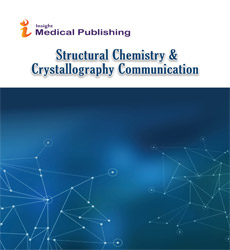Abstract
Intriguing Aspects of Non-innocent Ligands in Transition-Metal Catalysts
Non-innocent ligands play important roles in a variety of catalytic reactions. However, the ambiguous nature of their electronic structure causes problem for the assignment of the metal’s oxidation state and for a clear-cut role of the metal in their reaction mechanisms. Nickel bis(dithiolene) complexes, which exist in three oxidation states [Ni(S2C2R2)2]n (n = 2-, 1-, 0), are all square-planar Ni(II) with redox active ligands. The neutral complex reacts with an alkene to produce the cis-interligand adduct, which upon reduction releases the alkene. Among the related ruthenium tris(thiolate) complexes, [Ru(dppbt)3]n (n = 1–, 0, 1+) (dppbt = diphenylphosphinobenzenethiolate), the most oxidized form also reacts with alkenes, a reaction attributed to thyil-diradical character involving two S atoms. Although it seems clear that [Ru(dppbt)3]1– is Ru(II) with three thiolate ligands, the nature of the most oxidized form, [Ru(dppbt)3]1+ appears elusive. High-level ab initio methods (CASSCF and CASPT2) predict its ground state electronic structure to be an open shell diradical singlet state with a Ru(III) (d5, S = 1/2) antiferromagnetically (AF) coupled to a thiyl radical (S = 1/2), rather than the previous description based on a dithiyl state involving two S 3p orbitals. These new results provide an improved understanding of this system’s experimental behavior. Furthermore, the related Re complexes [Re(dppbt)3] n (n = 0, 1+, 2+) span two additional higher oxidation states. High-level ab initio methods confirm a CS singlet with a Re(III) (d4, S = 0) center as the ground state of [Re(dppbt)3]0. Thus, this neutral Re species has considerably less thiyl radical character than the valence isoelectronic [Ru(dppbt)3]1+. On the other hand, the more oxidized derivatives [Re(dppbt)3]1+ and [Re(dppbt)3]2+ show significant metal-stabilized thiyl radical character; both have major contributions from Re(III) (d4, S = 1) centers AF coupled to thiyl- and dithiyl-dppbt ligands. These findings are consistent with the experimental chemistry as [Ru(dppbt)3]1+, [Re(dppbt)3]1+, and [Re(dppbt)3]2+ can add ethylene to form the new C-S bonds, but [Re(dppbt)3]0 cannot. These complexes have been extensively studies as electrochemical catalysts for both proton reduction and H2 oxidation. The interesting protonated intermediate, [HRe(dppbt)3]1+, has been studied by x-ray crystallography that shows a protonated S. However, DFT calculations and the experimental structure appear to disagree on which S is actually protonated.
Author(s):
Michael B. Hall
Abstract | PDF
Share this

Google scholar citation report
Citations : 275
Abstracted/Indexed in
- Google Scholar
- China National Knowledge Infrastructure (CNKI)
- Directory of Research Journal Indexing (DRJI)
- WorldCat
- Geneva Foundation for Medical Education and Research
- Secret Search Engine Labs
- CAS (Chemical Abstracting Services)
Open Access Journals
- Aquaculture & Veterinary Science
- Chemistry & Chemical Sciences
- Clinical Sciences
- Engineering
- General Science
- Genetics & Molecular Biology
- Health Care & Nursing
- Immunology & Microbiology
- Materials Science
- Mathematics & Physics
- Medical Sciences
- Neurology & Psychiatry
- Oncology & Cancer Science
- Pharmaceutical Sciences

